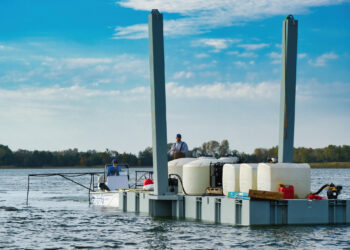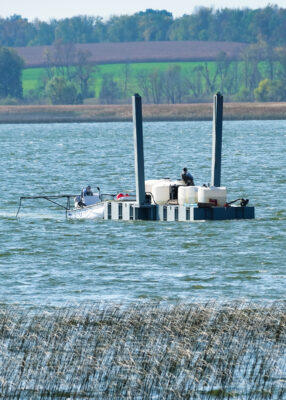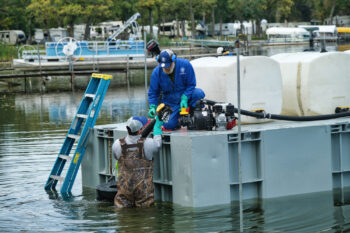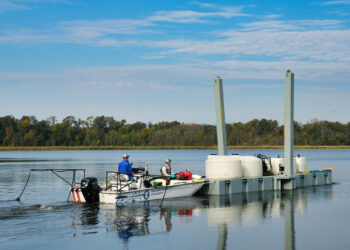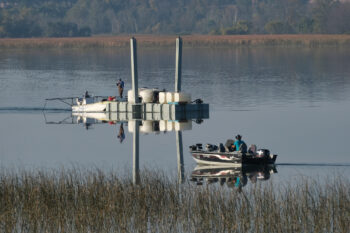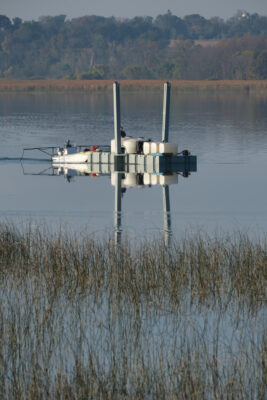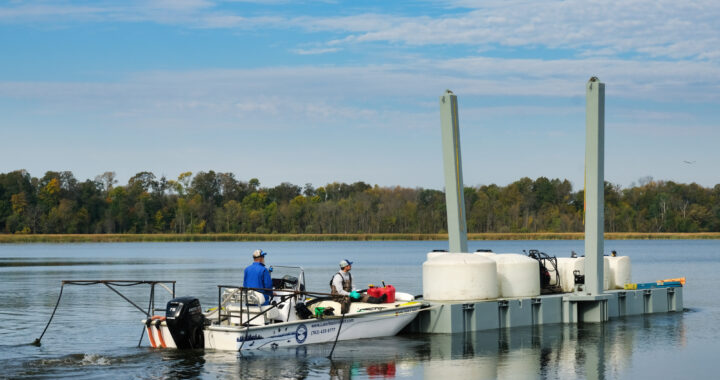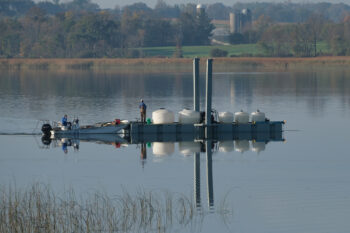
This week Lake Restoration, Inc. began treating Big Swan with alum, which could last 10-14 days depending on weather. Its barge carries 1,700 gallons per trip, requiring 52 loads to dispatch the 87,000 gallons that will be injected into the lake this October. The GPS-guided applications will be repeated in the main basin of the lake next early spring or late fall to avoid interfering with recreational activities.
Alum, or aluminum sulfate, is injected several feet below the surface. It reacts with water to form a gelatinous substance called floc, which binds with suspended phosphorus and other pollutants. As the floc settles to the bottom it clarifies the water and immobilizes phosphorus, preventing its release from sediments into the water column. Big Swan has a higher than normal turnover rate, a process that releases phosphorus from long built-up bottom sediment causing algae blooms.
Paul Kretsch, co-owner of Lake Restoration with his brother Brian, says the water clarification results will last many years. Treating with alum is a well-established practice that has long been used for water purification, wastewater treatment and other uses, and Kretsch says their company has been doing it since 1998. There is no evidence to suggest alum is a health threat to humans or fish.
Lee Daly of the Big Swan Lake Improvement District (LID) and his committee coordinates the alum treatment project with help and support from the Lake Improvement Association, MPCA, Todd County Soil and Water, local DNR offices and other partners seeking improved water quality for Big Swan. One of the major funding sources is a state Clean Water Fund grant..
